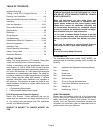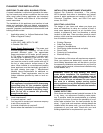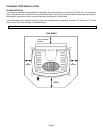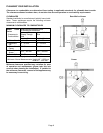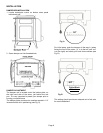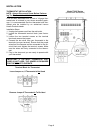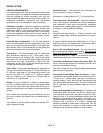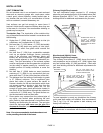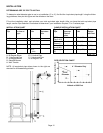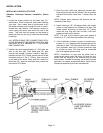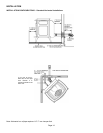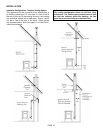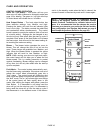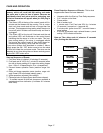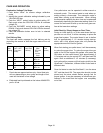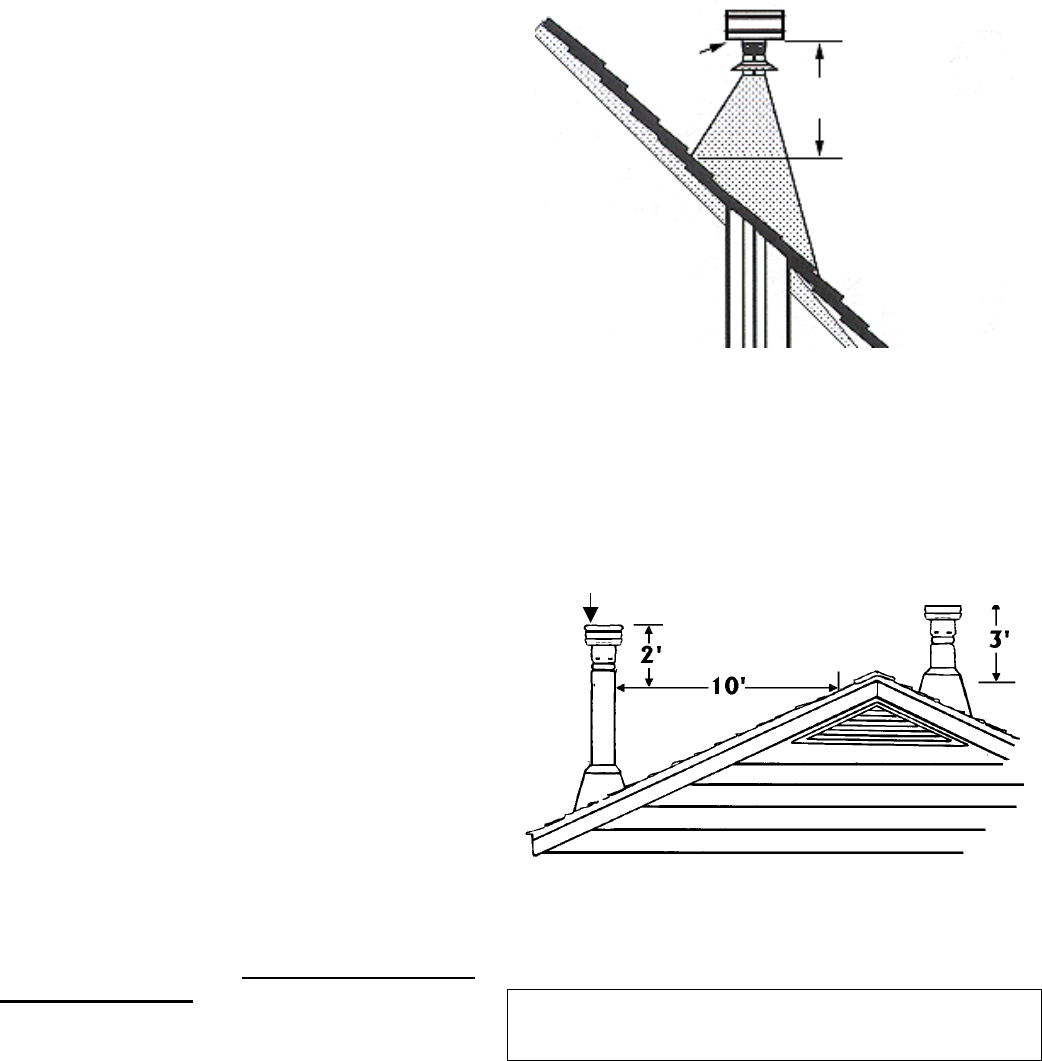
INSTALLATION
PAGE 11
VENT TERMINATION
Do not terminate vent in an enclosed or semi-enclosed
area such as: carports, garage, attic, crawl space, under
a deck, porch, narrow walkway, closely fenced area, or
any location that can build up a concentration of fumes
such as a stairwell, covered breezeway, etc.
Vent surfaces can get hot enough to cause burns if
touched. Adults should supervise children when they are
in the area of a hot stove. Non-combustible shielding or
guards may be required.
Termination Cap: The termination of the outside chim-
ney of the pellet stove shall be located in accordance with
the following:
A. Higher than 3’ (.92M) above any forced air inlet (air
conditioner, etc.) located within 10’ (3M).
B. Not less than 4’ (1.2M) below, 4’ (1.2M) horizontally
from or 1’ (3.1M) above any gravity air inlet (door,
window, etc.) which flue gases could re-enter the
dwelling.
C. Not less than 2’ (.6M) from combustible materials
such as an adjacent buildings, fences, protruding
parts of the structure, roof overhang, plants and
shrubs, etc. and not less than 7’ (2.1M) above grade
when located adjacent to the public sidewalks (ac-
cess). The final termination of the exhaust system
must be configured so that flue gases do not jeopard-
ize the safety of people passing by, overheat com-
bustible portions of nearby structures or enter the
dwelling.
D. Not less than 3’ (.92M) below an eave (maximum
overhang of 3’ (.92M) or any construction that pro-
jects more than 2” (51mm) from the plane of the wall.
E. The distance from the bottom of termination to grade
is 12” (305mm) minimum. This is conditional upon
plants and nature of grade surface: Be careful to
choose a location for the vent termination which does
not expose people or shrubs to high heat from the
exhaust gases. The exhaust gases are not hot
enough to ignite grass, plants and shrubs located in
the vicinity of the termination although they should be
a minimum of 3’ (.92M) away. The grade surface un-
der the termination must not be a lawn.
F. Since sparks may escape from the exhaust pipe of
any stove, use caution when positioning the vent
pipe. Refer to pipe manufacturer’s instructions when
installing and terminating the exhaust. The vent pipe
should be horizontal and never run the pipe in a
downward direction (recommend a ¼” (7mm) rise
per foot horizontal).
Note: It is not recommended to terminate exhaust vent
on the prevailing wind side of the house.
Chimney Height Requirements
The vent termination height required is 12” minimum
above the roof penetration point as illustrated below (Ref.
National Standard, NFPA 7-4.1). Check with your local
building official for additional requirements for your area.
Manufactured (Mobile) Home
Chimney Height Requirements
The chimney must extend 3’ (.92M) above the level of
roof penetration and a minimum of 2’ (.61M) higher than
any roof surface within 10’ (3M) (see below). Check with
your local building officials for additional requirements for
your area.
To pass inspection in nearly any jurisdiction, the chimney
must meet both safety and exhaust flow requirements.
The (3’ by) 2’ by 10’ rule applies to both masonry and
factory built chimneys.
✸
Ref. NFPA 7 – 4.1.2, Vents installed with a listed cap
shall terminate in accordance with the terms of the cap’s
listings.
TOP OF FLUE MUST BE 2’
HIGHER THAN ANY PART OF
ROOF WITHIN 10’ HORIZONTAL
TOP OF FLUE MUST BE 3’
HIGHER THAN HIGHEST POINT
OF ROOF PENETRATION
REQUIRES A
LISTED
TERMINATION
CAP
✸
TERMINATION MUST BE
A
T LEAST 12” (305mm)
A
BOVE THE HIGHEST
POINT WHERE IT PASS-
ES THROUGH THE ROOF
SURFACE.
12” MIN
REQUIRES A LISTED
TERMINATION CAP
✸



